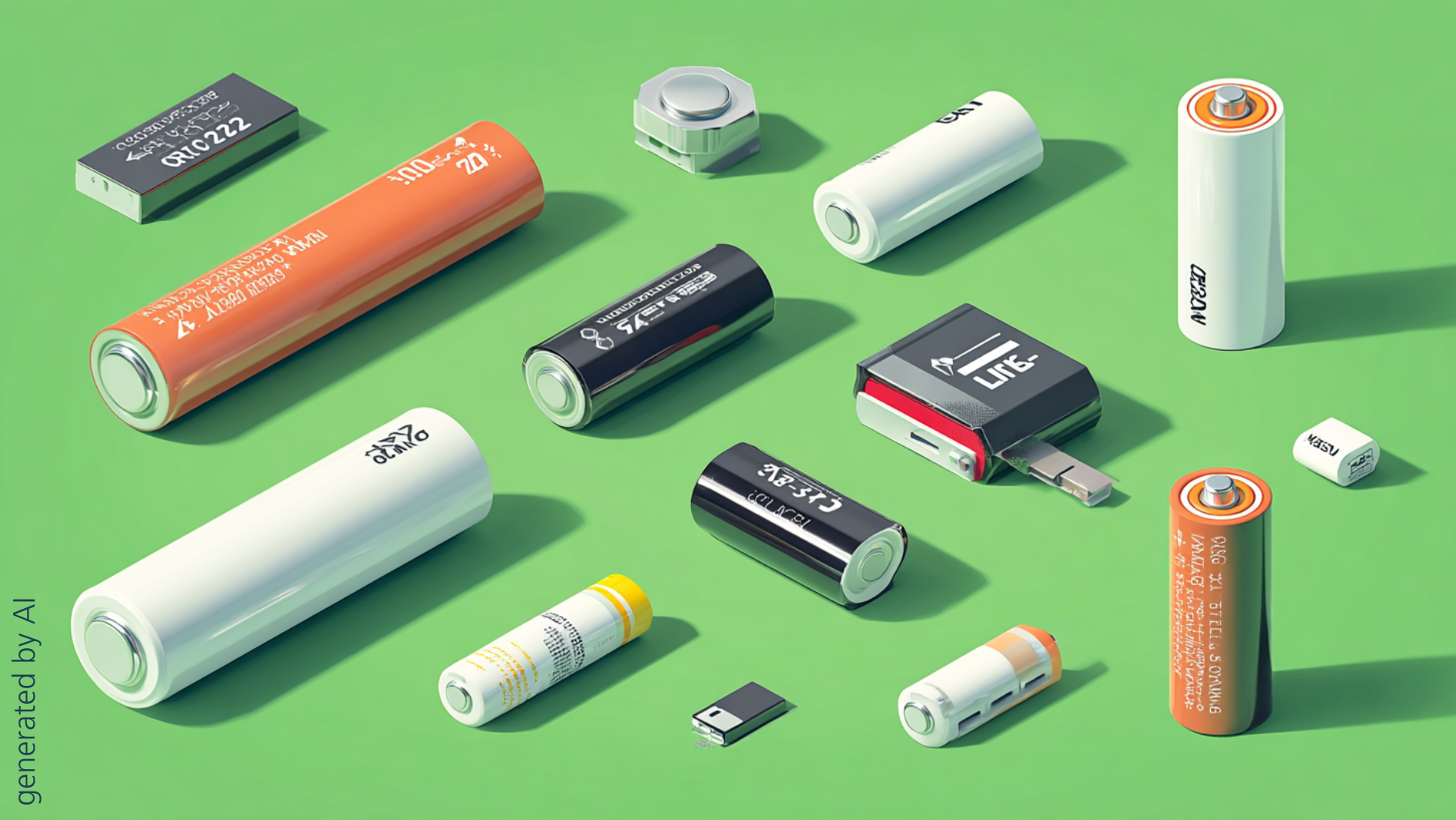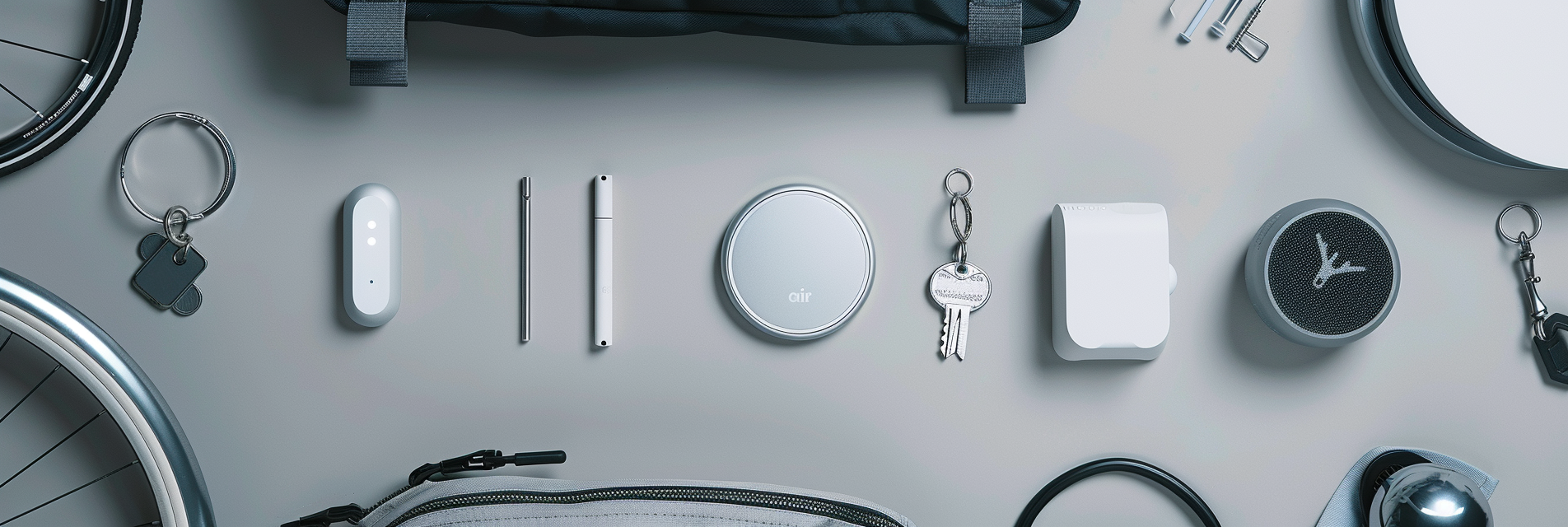With every digital device getting smarter and smaller and innovation fits into our pockets, the need for compact, efficient battery solutions has never been greater. A recent Market Growth Report notes that wearable device shipments hit nearly 500 million in 2023, and 85% of smartwatches and health trackers rely on button cell batteries. One prime example of this trend are Apple’s Airtag batteries that power cutting-edge tracking technology. These small yet potent powerhouses play a crucial role in the functionality of today’s digital life, enabling users to keep track of their belongings with ease. In this article, we will explore the significance of Airtags and other compact batteries and how they keep revolutionizing our everyday lives.
Small, Efficient, Long-Lasting: What’s Inside the Airtag Battery
Smart trackers, such as Airtag batteries are primarily CR2032 coin cell lithium batteries, known for their compact size and impressive energy density. These lithium-based batteries can last up to a year under normal usage conditions. They are widely used in devices that require compact power solutions, such as smartphones, flashlights, car keys, and vaporizers. This versatility allows for a seamless user experience in an increasingly connected world. However, it’s essential to note that extreme temperatures can affect battery performance; for instance, exposure to temperatures above 60°C (140°F) can lead to battery failure.

Understanding the Battery Material
When discussing compact batteries, it’s important to differentiate between lithium-driven CR2032 batteries, and rechargeable options like Nickel-Metal Hydride (NiMH) batteries. CR2032 batteries are non-rechargeable lithium coin cells, ideal for low-drain devices. In contrast, lithium-ion batteries are rechargeable and offer higher energy density, making them suitable for smartphones and laptops. NiMH batteries are also rechargeable but typically have a lower energy density than lithium-ion batteries; however, they are more environmentally friendly as their components, nickel and rare earth metals, can be recovered more easily in the dismantling and recycling process. Each type serves specific applications which highlights the variety of compact battery technologies available today.
Advantages of Compact Batteries
The benefits of using smart tracker batteries extend beyond their size. For instance, these batteries are lightweight and easy to replace, making them user-friendly. Additionally, their long-lasting nature means that users do not have to worry about frequent replacements; Airtag batteries typically need changing only once a year. In contrast, traditional batteries may require more maintenance and can be cumbersome. Furthermore, the widespread availability of CR2032 batteries ensures that users can easily find replacements, thus enhancing the overall convenience of using item finders on essential devices. As a result, compact batteries like those used in Airtags offer a perfect blend of functionality and practicality.
Challenges and Environmental Impacts
While Airtag batteries have numerous advantages, they are not without their drawbacks. One major concern is the limited capacity of these compact batteries, which can restrict their use in high-drain devices. Despite their efficiency, CR2032 batteries may not last as long in devices that require constant power. Additionally, the lifecycle of these batteries raises concerns about waste; improper disposal of lithium batteries can lead to environmental contamination. Especially, disposable e-cigarettes present a significant environmental challenge due to their short usage lifespan and the fact that many users do not dispose of these devices through proper recycling or hazardous waste collection channels. This frequent turnover generates substantial amounts of electronic waste, which is then commonly discarded with general household waste, leading to the release of toxic substances into landfills. Understanding these disadvantages is essential for consumers who want to use their technology in a responsible way.

Innovations in Battery Research
Recent advancements in battery research have opened the door for even more efficient compact batteries. For instance, scientists are exploring solid-state batteries, which promise to deliver higher energy densities and improved safety compared to traditional lithium-ion batteries. Additionally, researchers are investigating alternative materials that could enhance battery performance and reduce environmental impact. These innovations could lead to the development of next-generation compact batteries, possibly transforming the capabilities of devices like Airtags. As these technologies evolve, we can expect even greater efficiency and longevity in battery-powered devices.
The Future of Airtag Technology
Looking ahead, the future of object tracking technology is closely tied to advancements in compact batteries. As new battery technologies emerge, we may witness significant improvements in tracking capabilities and functionality. For example, enhanced battery life could allow for more sophisticated features, such as real-time tracking and advanced notifications. Moreover, as consumers become increasingly aware of sustainability issues, the demand for eco-friendly batteries will likely influence the direction of battery research. Therefore, the evolution of compact batteries is poised to play a pivotal role in shaping the future of smart technology.
Key Findings
Airtag batteries exemplify how compact batteries can significantly enhance our daily lives. While compact batteries provide numerous advantages, it is important to consider their limitations, including potential waste and environmental concerns. With ongoing advancements in battery technology, we can expect even more efficient and sustainable solutions in the near future.
Enroll into our Online Battery Training and broaden your knowledge on Battery Materials and its application. Don’t miss out on the opportunity and get to know cutting-edge knowledge with use cases from industry. The EBBC provides unique lifelong learning programs that can enhance your career and understanding of the rapid energy transformation.
Further readings:
- Alternative Battery Technologies Roadmap 2030+, Fraunhofer ISI
- Environmental Impacts of Disposable Vapes, US PIRG Fund
FAQs on Airtag Batteries
What type of battery does an Apple Airtag use?
Apple Airtags primarily use CR2032 lithium coin cell batteries, which are compact, non-rechargeable, and provide long-lasting power—typically up to one year under normal usage.
How long do Airtag batteries typically last?
Airtag batteries, specifically CR2032 coin cells, usually last about one year with regular use before needing replacement.
Are Airtag batteries rechargeable?
Airtag batteries are not rechargeable; instead, they are designed to be easily replaceable by the user once depleted, typically after about one year of use.
What environmental concerns are associated with compact batteries like those in Airtags?
Compact batteries such as CR2032 pose environmental risks mainly due to improper disposal, leading to toxic substances contaminating landfills. Disposable devices like e-cigarettes exacerbate electronic waste issues due to their short lifespan and lack of proper recycling.
How will advancements in battery technology impact future Airtag features?
Improved battery life and efficiency from next-generation compact batteries could enable Airtags to offer enhanced tracking capabilities, real-time updates, and more sophisticated notifications while also supporting sustainability goals.




